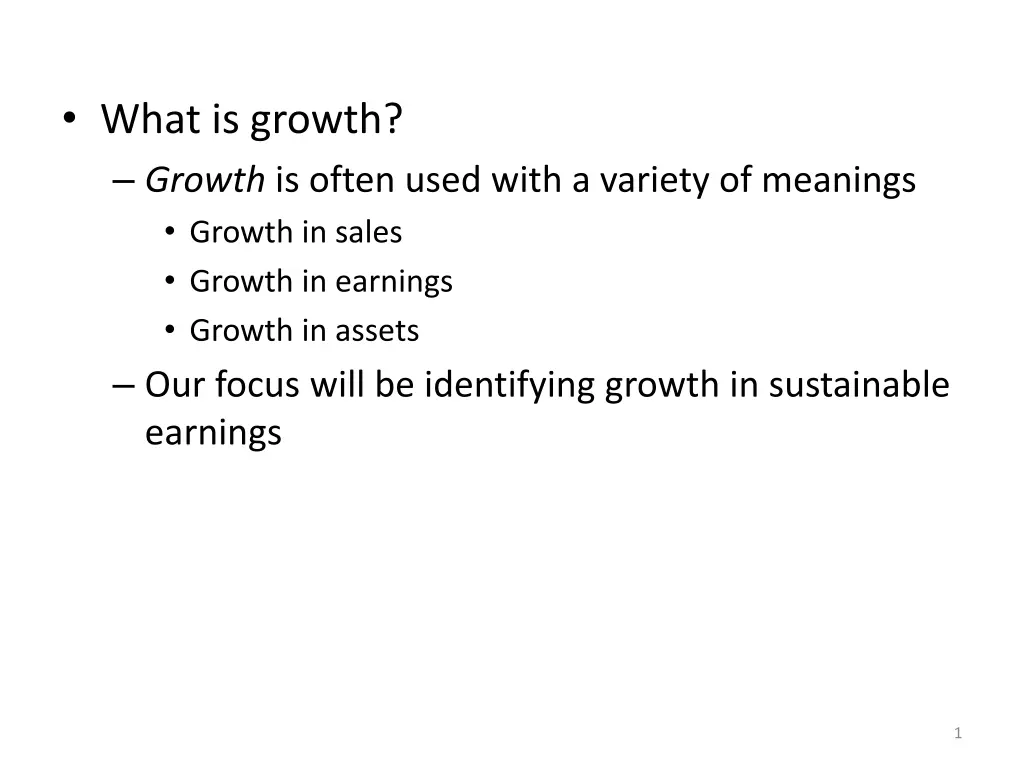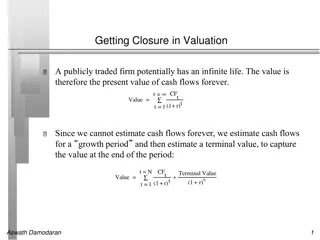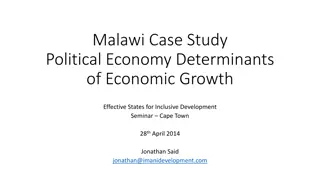
Understanding Sustainable Earnings Growth
Learn how to identify sustainable earnings for potential growth, distinguish core earnings from transitory earnings, and reformulate operating income to support long-term financial success.
Download Presentation

Please find below an Image/Link to download the presentation.
The content on the website is provided AS IS for your information and personal use only. It may not be sold, licensed, or shared on other websites without obtaining consent from the author. If you encounter any issues during the download, it is possible that the publisher has removed the file from their server.
You are allowed to download the files provided on this website for personal or commercial use, subject to the condition that they are used lawfully. All files are the property of their respective owners.
The content on the website is provided AS IS for your information and personal use only. It may not be sold, licensed, or shared on other websites without obtaining consent from the author.
E N D
Presentation Transcript
What is growth? Growth is often used with a variety of meanings Growth in sales Growth in earnings Growth in assets Our focus will be identifying growth in sustainable earnings 1
Identify earnings on which growth is possible Core earnings (also sustainable earnings, persistent earnings, underlying earnings) Earnings that can repeat in the future and grow Transitory earnings (also unusual items) Earnings based on temporary factors Also includes items that appear each period but can t be forecast --- e.g. dirty surplus items 2
Operating income = core operating income + unusual items = core operating income from sales + core other operating income + unusual items 3
Reformulated Operating Income (1) Core operating Income Core sales revenue - Core cost of sales = Core gross margin - Core operating expenses = Core operating income from sales before tax - Tax on core operating income from sales + Tax as reported + Tax benefit from net financial expenses - Tax allocated to core other operating income - Tax allocated to unusual items = Core operating income from sales 4
Reformulated Operating Income (2) Core other operating Income + Equity income in subsidiaries + Earnings on pension assets + Other continuing income not from sales - Tax on core other operating income (1) + (2) = Core operating income 5
Reformulated Operating Income (3) Unusual items - Special charges - Special liability accruals +/- Nonrecurring items - Asset writedowns +/- Changes in estimates - Startup costs expensed +/- profits and losses from discontinued operations +/- extraordinary operating items +/- accounting changes +/- unrealized gains and losses on equity investments + Gains from share issues in subsidiaries +/- Currency gains and losses +/- Derivative gains and losses - Tax allocated to unusual items = (1) + (2) + (3) = Comprehensive operating income 6
Issues in identifying core operating income 1. Deferred (unearned) revenue 2. Restructuring charges, asset impairments, and special charges 3. R&D 4. Advertising 5. Pension expense 6. Changes in estimates 7. Realized gains and losses 8. Unrealized gains and losses on equity investments 9. Unrealized gains and losses from applying fair value accounting 10. Income taxes 11. Other income 7
Core operating profitability OI Core RNOA = UI + NOA NOA Core from OI Sales Core other OI UI = + + NOA NOA NOA To the extent that RNOA is driven by UI, it is said to be of low quality , i.e., it is not sustainable 8






















